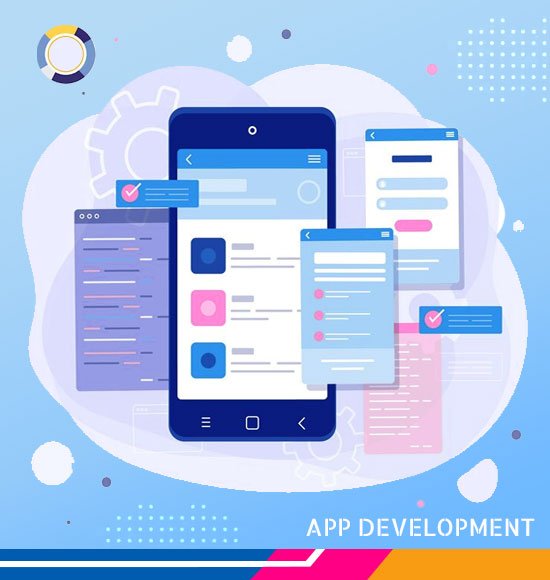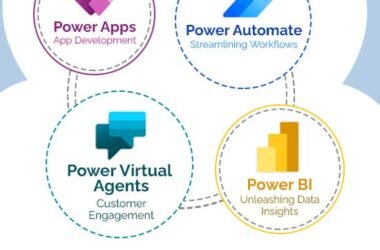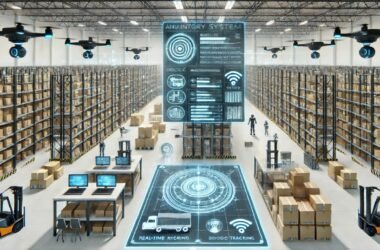Virtual try-on app development allows users to visualize products in real-time, boosting customer satisfaction and increasing the likelihood of completing a purchase. It also provides businesses with valuable insights into customer preferences and behaviors, empowering them to refine their product offerings and marketing strategies. The virtual fitting room market is expected to grow at a CAGR of 21.1%, making it a crucial tool for businesses looking to stay competitive. This blog will cover all aspects of virtual try-on apps, including benefits, challenges, and development processes.
How do Virtual Try-on Apps Benefit Businesses?
A virtual try-on app helps customers digitally try on products before making a purchase. It uses advanced technologies like AR or AI to enhance the online shopping experience, increase customer satisfaction, and reduce return rates. It also provides valuable data insights to businesses, allowing them to optimize their product offerings, stay ahead of the curve, and increase revenue. In short, virtual try-on app development is a valuable tool for companies looking to improve their online presence.
Virtual try-on apps provide businesses with a competitive edge in the digital world. They boost customer engagement and help startups and enterprises succeed. Want to know more about how these innovative solutions can benefit your business? Keep reading.
Enhanced Customer Satisfaction & Confidence
By offering virtual try-on apps, brands can offer a more engaging and satisfying shopping experience, which can lead to greater customer confidence in their purchasing decisions. This, in turn, can help to increase customer satisfaction, loyalty, and brand reputation.
Reduced Return Rates & Increased Sales
Virtual try-on app development can reduce return rates and increase sales by allowing customers to preview products virtually before purchasing. This can minimize returns, save on associated costs, and redirect resources towards revenue-generation activities.
Improved Personalization & Shopping Experience
The personalized approach of virtual try-on apps can offer tailored product recommendations and styling suggestions, thus enhancing the overall shopping experience and fostering stronger connections between the brand and its customers.
Boosted Brand Engagement & Social Sharing
Virtual try-on apps also promote active customer participation, driving higher levels of engagement with the brand. By incorporating social sharing features, businesses can capitalize on user-generated content and word-of-mouth marketing, ultimately amplifying brand visibility and reach.
Data-Driven Insights & Product Optimization
Virtual try-on apps provide valuable insights into customer preferences and behavior, enabling businesses to make data-driven product development and optimization decisions, which can enhance product offerings and maximize market relevance.
Accessibility & Convenience
Virtual try-on apps democratize the shopping experience for all customers, regardless of location or physical abilities, thereby tapping into new market segments and expanding a business’s customer base.
Reduced Environmental Impact & Sustainability
Virtual try-on apps contribute to environmental sustainability by minimizing the need for physical product samples and reducing carbon emissions associated with transportation and logistics.
Cost Savings & Inventory Management
Virtual try-on apps can offer significant cost savings and inventory management benefits to businesses. By digitizing the try-on experience, companies can streamline inventory management processes and reduce the need for extensive physical stock and sample storage. This, in turn, allows businesses to optimize inventory levels, minimize excess stock, and reduce associated costs. Furthermore, virtual try-on technology eliminates the need for costly in-store displays and samples, resulting in additional cost savings.
Competitive Advantage & Market Differentiation
Offering virtual try-on apps can give businesses a distinct advantage in the market, setting them apart from their competitors. This cutting-edge technology allows for a unique and engaging shopping experience that resonates with modern consumers, establishing the business as a leader in its industry.
Future-Proofing Retail Strategy
Virtual try-on apps exemplify a progressive approach to retail that can aid businesses in securing their future by adapting to evolving consumer preferences and technological advancements. By investing in digital solutions, companies can remain relevant in a highly competitive market and adjust to changing market dynamics. The adoption of virtual try-on technology can position businesses for long-term success and sustainability in the retail industry.
With a thorough understanding of the valuable benefits of virtual try-on apps, it is worth exploring some use cases and real-world examples of virtual try-on apps.
Exploring Unique Virtual Try-on Technology Use Cases
Virtual try-on technology is being used in many areas nowadays. They are reshaping the user experience landscape across numerous industries. Below are just some of the use cases of virtual try-on technology.
Beauty and Makeup
Beauty makeup companies leverage virtual try-on technology and advanced augmented reality in their apps to enable users to try their products virtually, such as by experimenting with different lipstick shades, foundation colors, or hairstyles.
Eyewear
Virtual try-on apps for eyewear enable customers to visualize how different frames would look on their faces, aiding them in making an informed decision while selecting glasses or sunglasses. These apps also provide a wider range of frames for users to explore.
Home Decor
Virtual try-on apps are frequently used in the home decor and furnishings industry. These apps allow users to visualize how furniture and decor items will look and fit in their living space before making a purchase.
Jewellery
Virtual try-on apps for jewelry enable customers to visualize how different pieces of jewelry would appear when worn, assisting them in selecting the ideal piece for various events.
Apparel
Virtual try-on apps are widely used in the apparel industry. They help users choose the right size and style of clothing for their fitness activities by allowing them to see how the clothes will fit and look on their bodies.
Cosmetic Surgery
Virtual try-on apps are utilized in cosmetic surgery to help patients visualize potential surgical outcomes and make informed decisions, managing their expectations.
Entertainment and Gaming
Virtual try-on apps let users try on virtual costumes and accessories in entertainment and gaming industries, creating immersive experiences in games or virtual reality environments.
Business Logistics
Virtual try-on technology can help businesses improve their logistics operations. It enables accurate visualization of products, leading to better inventory management, precise demand forecasting, and optimal stock-level management.
Tourism
Virtual try-on apps have the potential to revolutionize the tourism industry by providing immersive experiences for travelers. These apps integrate with AR technology to offer virtual tours of hotels, resorts, attractions, and landmarks. By visualizing hotel rooms, amenities, and surroundings in real time, travelers can make informed decisions and personalize their travel planning.
Various industries, including fashion, beauty, eyewear, and home decor, are also utilizing this technology. Let’s take a look at the top brands that are benefiting from it.
Top Brands Using Virtual Try-On Apps to Their Benefit
Virtual try-on solutions are increasingly being embraced by leading brands across various sectors to enhance their sales strategies. By integrating innovative technologies seamlessly into online platforms, customers can enjoy an interactive shopping experience that boosts engagement and drives conversions. In this article, we will explore some of the most notable virtual try-on examples from prominent brands.
Nike
Nike, a global leader in athletic footwear and apparel, offers a virtual try-on feature called “Nike Fit” on its app. This technology is a prime example of virtual try-on capability, allowing customers to measure their feet and find the perfect shoe size and fit using their smartphone camera. By leveraging virtual try-on examples like “Nike Fit,” Nike can reduce the chances of ordering the wrong size online, ultimately enhancing customer satisfaction and boosting sales.
L’Oréal
L’Oréal has developed the “ModiFace” virtual try-on platform. This platform is integrated into various beauty brands’ websites and apps, including Lancôme and Maybelline. This technology is one of the most prominent virtual try-on examples, enabling users to try different makeup products and experiment with various looks virtually. It effectively drives engagement and increases conversion rates by offering customers an interactive and immersive shopping experience.
Google is another notable example of global tool integration with its virtual try-on feature. This feature revolutionizes the online shopping experience by offering virtual try-ons for apparel through advanced generative AI. By showcasing garments on a diverse array of real models representing various skin tones and body types, customers can visualize how items will fit them accurately before purchasing. Moreover, guided refinements enable users to fine-tune product searches based on preferences such as price, color, and pattern across multiple retailers. This enhances the overall shopping journey with personalized and inclusive features that empower customers to make confident and informed decisions.
Ultimately, businesses can leverage these features to boost profits and strengthen their online presence by driving increased customer satisfaction and sales. We can move towards the step-by-step virtual try-on app development process by exploring these virtual try-on examples.
How to Develop a Virtual Try-on App?
To create a successful virtual try-on app, following a detailed process that includes conducting thorough research, customizing features, and performing rigorous testing is essential. Each step is crucial for ensuring high performance and flawless implementation.
Research and Define Objectives
Market research is crucial for businesses to understand consumer preferences, competitor landscapes, and technological advancements. Defining clear objectives for virtual try-on apps helps align development efforts with strategic goals, enhance customer engagement, and innovate user experiences to maximize the app’s effectiveness in the market.
Choose App Features and Technologies
Businesses can enhance user experiences and drive engagement by selecting advanced features and technologies for their virtual try-on app. By integrating functionalities such as facial recognition and seamless ecommerce, enterprises can provide users with immersive and convenient try-on experiences, ultimately boosting sales and increasing user satisfaction.
Design UI/UX
Designing intuitive and visually appealing user interfaces is crucial for businesses to grab user attention and enable easy navigation within the app . a seamless and enjoyable user experience encourages positive interactions and boosts user engagement, which ultimately drives conversions.
Develop App Prototypes and MVP
Prototyping and MVP development help businesses test their app ideas and collect user feedback early on. By iterating and refining, companies can ensure that their virtual try-on app meets user expectations, addresses pain points, and aligns with market demands, increasing its chances of success during launch.
Integrate Backend Systems and APIs
Businesses can improve their virtual try-on apps by integrating backend systems and APIs. This supports essential functionalities such as product catalog management, user authentication, and payment processing. A robust and scalable infrastructure ensures smooth app operations, enhances data security, and enables businesses to provide seamless user experiences, ultimately driving customer satisfaction and retention.
Implement AR and Virtual Try-On Functionality
AR and VR virtual try-on app features provide users with realistic and accurate product visualization. This enhances user engagement and brand loyalty, making it a valuable addition to any business.
Test and Iterate
It is crucial to test and iterate thoroughly to ensure the quality and functionality of the virtual try-on app. Gathering user feedback, addressing bugs and performance issues, and refining features can improve overall quality and user satisfaction. Continuous iteration based on user input enables businesses to stay responsive to evolving user needs and market trends, driving long-term success.
Launch and Maintain
After testing the virtual try-on app, launch it on the App Store and Google Play Store. Monitor app performance metrics and user engagement to optimize marketing efforts, find areas for improvement, and drive app adoption to maximize its reach and impact.
Conclusion
Virtual try-on technology enables businesses to provide personalized and immersive shopping experiences, fostering stronger brand engagement and driving sales. With their potential to revolutionize various industries, from fashion and beauty to home decor and entertainment, virtual try-on apps represent a progressive approach to retail that future-proofs businesses and enhances their market differentiation.
By exploring unique use cases and real-world examples of virtual try-on apps, businesses can gain inspiration for implementing these solutions in their own strategies. With a strategic approach to development, including thorough research, customization of features, and rigorous testing, businesses can create successful virtual try-on apps that resonate with modern consumers and drive long-term success in the ever-evolving retail landscape








